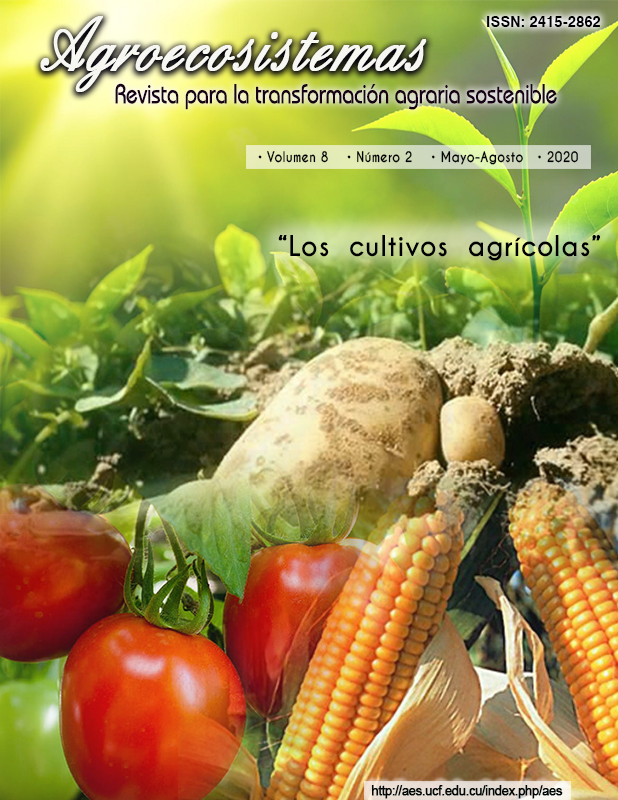Evaluación de dos métodos de plantación en áreas de semilla categorizada de caña de azúcar
Resumen
Fue evaluado un estudio de métodos de plantación donde se compararon el sistema de siembra de base ancha (1.40 + 0.40) con el tradicional (1.50) en las cepas de caña planta y retoño con 11 meses de edad. El estudio se desarrolló en áreas del Banco de Semilla Básico de Cienfuegos sobre suelo Pardo sin carbonato, el cultivar utilizado fue la C86-12. En cada tratamiento se evaluaron cinco repeticiones, parcelas de 36 m2 (20 metros de longitud x 1.80 entre hileras) para el sistema de base ancha y de 30 m2 para el tradicional (20 metros de longitud x 1.50 de distancia entre hileras). Las variables analizadas fueron, diámetro del tallo, longitud del tallo, número de tallos por metro y t caña ha-1. Se realizaron análisis de varianza, simple y prueba de comparación de medias (Test de Tukey P<0,01 y P<0,05). Los resultados ofrecieron diferencias significativas en las dos cepas en las variables número de tallos por metro y en el rendimiento agrícola a favor del sistema de plantación de base ancha, mientras que en retoño la longitud fue superior para el método de plantación tradicional. Al comparar ambas cepas en las variables analizadas se obtuvo que las t caña ha-1 y la longitud fueron superior en retoño, no así el diámetro que mostró los mejores resultados en caña planta, el número de tallos no mostró diferencia entre las cepas estudiadas. Se recomienda incrementar el sistema de plantación de base ancha como una vía de acrecentar la producción de semilla.
Palabras clave:
Tratamientos, cepas, base ancha.
ABSTRACT
A methods study of plantation was evaluated where compared the system of broad-based planting (1,40 + 0,40) with the traditional one (1,50) in the stocks of cane plants and ratoon with 11 elderly months. The study developed in areas of the Basic Seed Bank of Cienfuegos on Dark ground without carbonate, the used cultivar was the C86-12. In each treatment they evaluated five repetitions, 36 m2 plots of land (20 meters of length x 1,80 between rows) for the broad-based system and of 30 m2 for the traditional (20 meters of length x 1,50 of interrow distance). The analyzed variables were, diameter of the stem, length of the stem, number of stems for meter and great and t cane ha-1. They accomplished analysis of variance, simple and try comparative of stockings (Tukey's test P < 0.01 and P < 0.05). The results offered significant differences in the two stocks in the variables number of stems for meter and in the agricultural performance in favor of the broad-based planting system, while in ratoon the length was a superior for the method of traditional plantation. When comparing both stocks in the analyzed variables it was obtained than them the great t cane ha-1 and the length they were a superior in ratoon, I did not grasp the diameter that evidenced the best results in cane plant, the number of stems did not show difference between the studied stocks. It is recommended to increment the broad-based planting system like to increase the seed output road.Keywords:
Treatments, stocks, broad base.Descargas
Publicado
Cómo citar
Número
Sección
Licencia
La editorial "Universo Sur", de la Universidad de Cienfuegos, publica el contenido de la Revista Científica Agroecosistemas bajo una Licencia Creative Commons Atribución-NoComercial-SinDerivar 4.0 Internacional.
© Podrá reproducirse, de forma parcial o total, el contenido de esta publicación, siempre que se haga de forma literal y se mencione la fuente.







